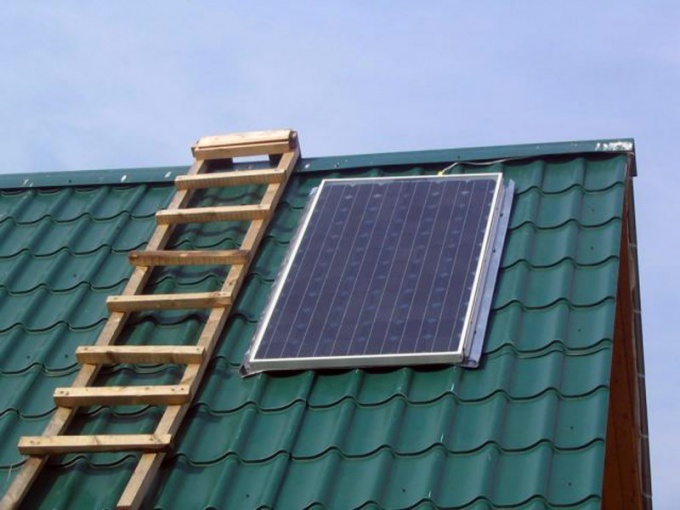Battery from old calculators
There are models of calculators solar. Typically, such a battery consists of three cells. Sometimes they can be more. The elements to be retrieved, and to save the connecting wires soldered to the element or attached to it with clips. This will greatly ease installation. For the manufacture of improvised source of energy is very useful also sensitive measuring device used. Single element produces the following amount of power from 1 sq cm area:
- current up to 24 mA;
- voltage of 0.5 V.
Under load get half voltage, which for practical purposes is totally inadequate. If you need more voltage or more amperage, you need to connect several such elements together. This requires a common panel of dielectric material (e.g., PCB). Serial connection (with the obligatory observance of polarity) will allow to increase the output voltage but the internal resistance of the solar cells is rather large. To reduce it (and increase the output power of the battery) it is useful to apply parallel connection of the individual elements. Can be connected in parallel as chains of series-connected battery elements, and individual elements to each other.
In any case, you need to follow the correct polarity. If you were able to keep the wires attached to the individual plates, solder the components together is fairly easy, but it should be done with the use of a heat sink. But when removing the solar cells keep the wires is not always possible. In this case, you can use spring clips and even small springs from ballpoint pens. Exactly the same principle you can assemble a solar cell from selenium wafers from old exposure meters.
The element soldering is impossible, because at home it will, most likely, to breach.
Old radio or a computer mouse unnecessary
Often at hand is not the finished solar cells. In this case, you can use an existing old radio parts. For example, by combining consistently a 20 point diodes in glass case (e.g., D9, D2), it is possible to obtain a voltage of 1.2 V. of Course, the correct polarity is necessary in this case. If the diode's body is covered with paint, it is necessary to wash or scrape off. Use any diodes as silicon and germanium. Additional parallel connection of the diodes and combinations of diodes in exactly the same way as in the first case, help to reduce the internal resistance of the battery. With the same purpose it is possible to use photodiodes from broken computer mice. Perhaps the use of LEDs, which can also operate as solar cells.
The battery of the transistors
Instead of diodes you can use transistors with metal housings. Here for light need to remove the metal housing or the upper part. You can use transitions collector - base and emitter - base. In this case, are suitable as silicon and germanium transistors, transistors with a broken collector or emitter, but it is desirable that they were identical. Connection rules are the same as those described in the first two ways. Useful application of additional reflective panels, casting light on solar panel.
The more powerful the transistors the more current can be removed from the battery.
Some of the subtleties
Transistors, as well as any cells, preferably protected from mechanical damage and dust. This assembled battery is better just to close the top. Suitable transparent film or a thin quartz glass. You can apply a thin Orgsteklo. Ordinary window glass, say, or laminated glass are not suitable, since delays ultraviolet rays.
It is important to ensure that the position of the battery relative to the sun, because it affects its effectiveness. Efficiency of solar panels made at home, is quite low and does not exceed 10%. To get electricity you can not in a very Sunny day, but the battery should not be heavily shaded. Voltage enough to charge batteries anywhere in the country or camping. By the way, in this way you can even illuminate a dark basement, the outside positioning of the battery and inside the led.
